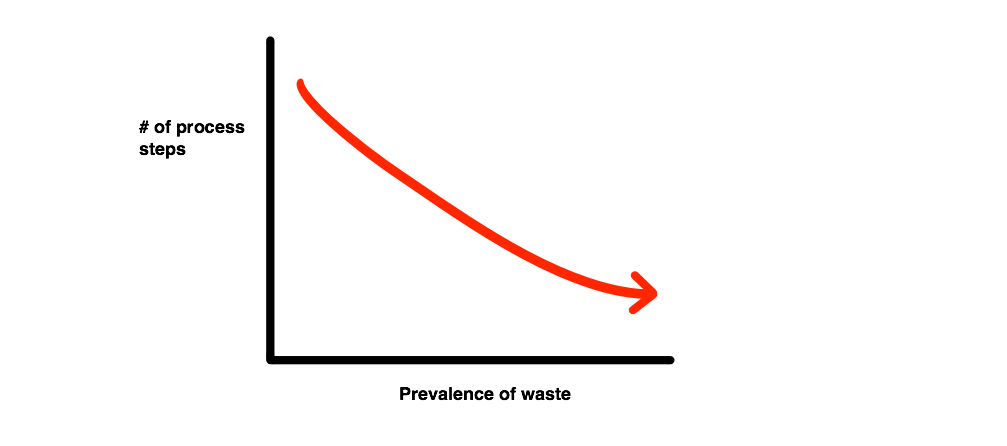 The more steps you have in a process, the more waste you'll have. No matter how smooth, efficient, and well-designed the process, more steps (and more people) means more waste.
Why? More steps means work is most likely waiting in more queues. It also means that you have more opportunities for miscommunication between people -- as Karen Martin (along with Mike Rother and Drew Locher) demonstrates, the compounding effect of even small errors in communication and handoffs causes an explosion of waste, as measured by the percent complete and accurate (%C&A) quality metric. Finally, the inevitable friction of coordinating multiple steps -- think of the emails that must be read, the low value meetings that people attend -- reduces overall efficiency.
The more steps you have in a process, the more waste you'll have. No matter how smooth, efficient, and well-designed the process, more steps (and more people) means more waste.
Why? More steps means work is most likely waiting in more queues. It also means that you have more opportunities for miscommunication between people -- as Karen Martin (along with Mike Rother and Drew Locher) demonstrates, the compounding effect of even small errors in communication and handoffs causes an explosion of waste, as measured by the percent complete and accurate (%C&A) quality metric. Finally, the inevitable friction of coordinating multiple steps -- think of the emails that must be read, the low value meetings that people attend -- reduces overall efficiency.
The antidote: Cross-train people to do more than one job. Redesign processes to remove steps. Create standard work with templates, models, and checklists to reduce the errors in the remaining steps.
